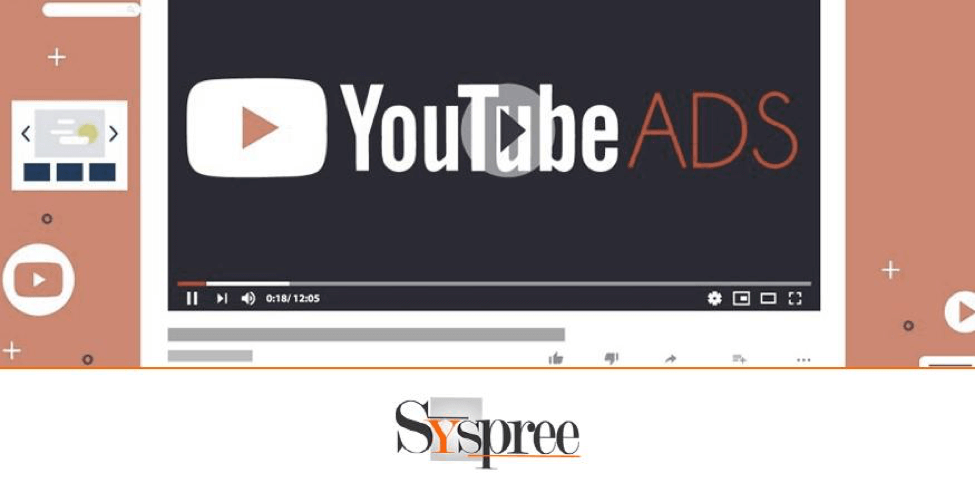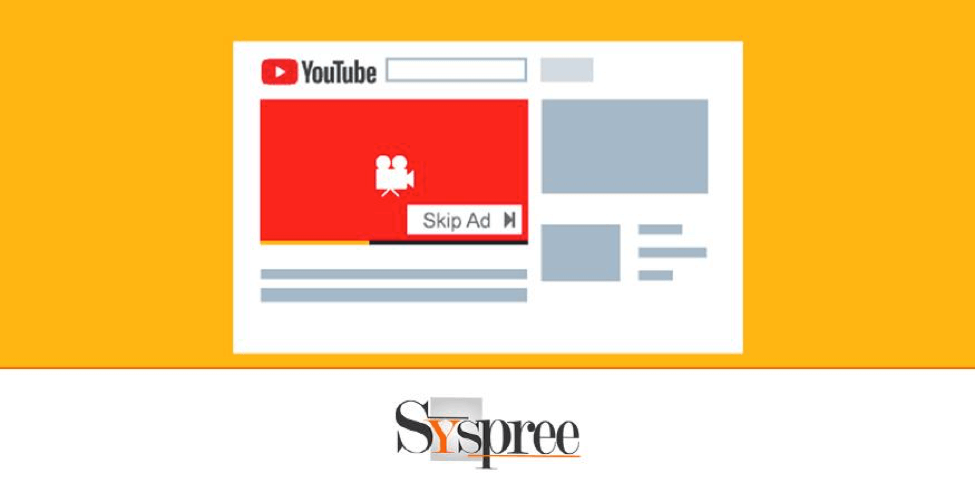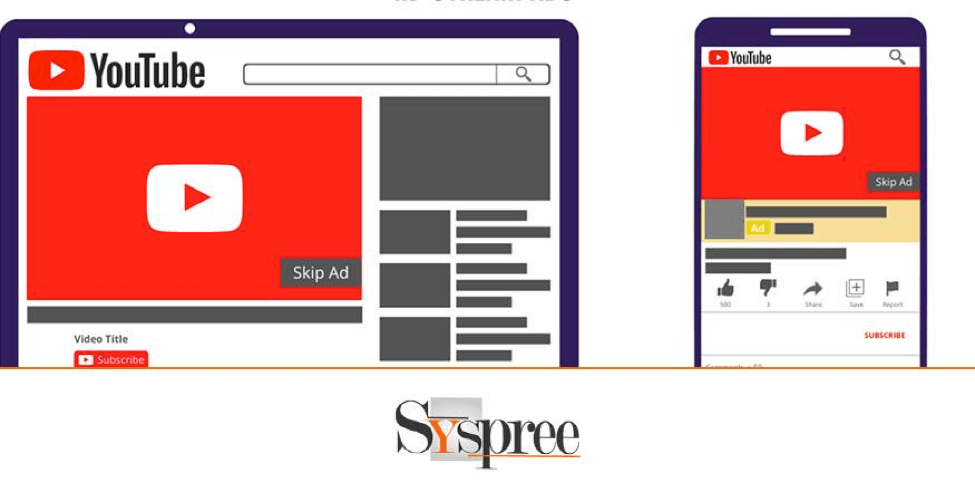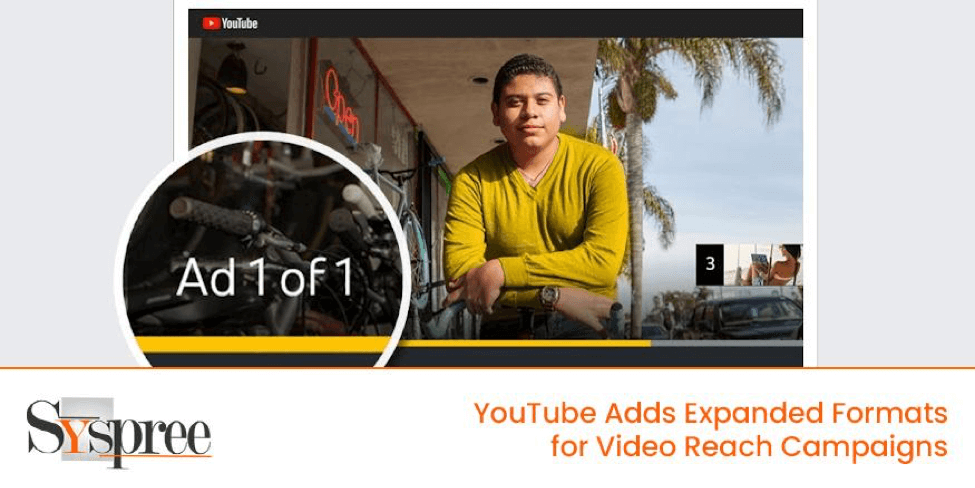In a strategic move to help advertisers become more effective and increase the versatility of their campaigns, YouTube has broadened the possibilities of the Video Reach Campaigns (VRCs). The expansion brings a new variety of ad formats, including In-Feed and Shorts Ads, allowing marketers to choose a more diverse and effective method of engaging their targeted audience seamlessly.
Youtube’s Expansion of Video Reach Campaigns
The potential for VRCs that include In-Feed and short ads and traditional In-Stream options represents an important change in the YouTube advertising environment. Using advanced machine learning technologies, specifically in decision-making processes, Google, the parent company behind YouTube, seeks to find the most effective combinations of advertisements within a campaign. The leading social media agency in Mumbai say that this technology allows advertisers the greatest reach and effectiveness, allowing them to engage with their target audience in various settings and occasions.
Inclusion of In-Feed and Shorts Ads for Marketers
The addition of ads in the feed places video content alongside other relevant YouTube content by strategically placing advertisements in the search results, the “Watch Next” section, and the Home feed in the YouTube application. This strategy ensures effortless content integration for promotion in the user’s browsing experience.
Furthermore, introducing Shorts Ads presents a new dimension in ad delivery with skippable videos or image ads appearing in the Shorts Feed on YouTube. As the platform experiences changes in its user engagement due to the increasing popularity of Shorts on mobile devices, YouTube acknowledges the evolving landscape. It offers brands the opportunity to engage their viewers through a variety of content formats.
This addition demonstrates YouTube’s commitment to innovation and adaptability to the changing behavior of users. Integrating In-Feed with Shorts Ads in VRCs allows marketers to create more successful campaigns and reflects the changing ways that people interact with the content available on YouTube. In the years ahead, as YouTube continues to influence how advertising will be short, marketers can expect greater flexibility and innovation in communicating with their audience.
Enhanced VRC Formats

Video Reach Campaigns – Enhanced VRC Formats
YouTube has boosted its capabilities for Video Reach Campaigns (VRCs) by implementing a new strategy offering diverse ad formats. This change allows advertisers to expand their campaigns across In-Feed Shorts and In-Stream ads, offering a more nuanced and diverse approach to interact with the target audience effortlessly.
Google’s Machine Learning for Optimal Ad Combinations
The secret to this improvement is Google’s sophisticated machine-learning technology that automatically determines the best combination of ads in one campaign. This technological advancement enables advertisers to maximize reach and effectiveness by strategically placing their content in different formats on YouTube.
Scalability to In-Feed, Shorts, and In-Stream Ads
In-feed ads, an important upgrade element, strategically place videos alongside important YouTube content. These ads seamlessly integrate with the user experience by appearing in search results, on the “watch next” section, and on the home feed in the YouTube application. This method ensures that advertising content is contextually presented, which increases the chances of engaging users.
Shorts Ads enhances the landscape of ad delivery, offering skippable videos or image ads in the Shorts Feed on YouTube. As Shorts are becoming more prominent in the user experience, especially when using mobiles, this new feature aligns with the changing preferences of the users. It allows advertisers to attract users with a format that reflects modern behavior in how they view it.
YouTube’s dedication to improving VRC formats is a clear response to the ever-changing character of online advertising. Advertisers can create more complete and effective campaigns by seamlessly integrating In-Feed Shorts and In-Stream ads. The experts from the leading social media agency in Mumbai says as YouTube continues to focus on developing new technologies, advertisers who use Video Reach Campaigns can anticipate an enhanced toolkit that will be in tune with the changing ways users consume content on YouTube.
Significance of Marketers
The growth of the YouTube Video Reach Campaigns (VRCs) is a major milestone for those who want to improve their digital marketing strategies. With the introduction of additional formats like In-Feed and Shorts Ads, YouTube empowers marketers to expand their audience reach in prime moments of conversion, opening up new avenues of interaction and engagement.
Videos Reach Campaigns, introduced in 2019, have grown into a multifaceted tool for advertisers that allows them to include different types of ads in one campaign. Adding both In-Feed and Short ads enhances the potential of VRCs, providing advertisers with a diverse and efficient method of connecting with their targeted viewers.
AI Decision-Making Reduces Guesswork for Marketers
One of the major benefits to marketers lies in the strategy decision-making facilitated through AI inside the VRC framework. Machine learning technology can decide the most effective combination of ad formats, freeing marketers of the guesswork of optimizing campaigns. This simplifies the advertising process and lets marketers concentrate on the important aspects of their campaigns.
The importance of this improvement is its capacity to match advertising content to users’ behavior and preferences. The leading creative agency in Mumbai says In-feed ads strategically place campaigns with relevant content, providing the right placement for content that is appealing to people. Short ads, skippable videos, or images take advantage of the growing consumption trend of short-form content that caters to users’ shifting viewing habits.
Broadening Audience Reach in Prime Conversion Moments
When marketers are trying to navigate the ever-changing digital advertising landscape, The expanded formats used in Video Reach campaigns provide an invaluable toolkit. By extending the reach of their audience at the time of conversion and utilizing AI to make ad format choices, marketing professionals can boost the campaigns’ efficiency and make significant connections with their audiences in a wider and more engaging way.
Video Reach Campaigns Overview

Video Reach Campaigns – Video Reach Campaign Overview
YouTube’s Video Reach Campaigns (VRCs) have become an essential instrument for marketers since their launch in 2019. They offer a broad method of digital marketing. VRCs permit marketers to upload a variety of kinds of ads in a single campaign, allowing the flexibility and effectiveness to reach the right viewers.
Launch and Evolution Since 2019
The first VRCs were launched in 2019. They offer various formats, including compact yet powerful six-second bumper ads, skippable in-stream, and non-skippable in-stream advertisements. This versatility allows marketers to customize their campaigns to the different preferences of audiences as well as engagement levels. Machine learning, the core of Google’s method, automatically determines the most effective combination of these formats, ensuring maximum reach and effectiveness.
Ad Types Within VRCs: Bumper Ads, Skippable/Non-Skippable In-Stream Ads
The various ad formats in VRCs have two main functions, each tailored to specific marketing goals. The first, a high-quality reach, focuses on getting a larger audience at a lesser cost. Marketers can use bumper advertisements, skippable in-stream ads, or a combination of both in a single campaign to reach users at critical moments. The second option, the target frequency, lets advertisers communicate a comprehensive message to their users via non-skippable ads in-stream, skippable in-stream, and bumper advertisements.
Thanks to their short duration, Bumper ads are perfect for grabbing attention within only a few seconds, while skippable and non-skippable ads in-stream offer the option of delivering more complete messages. This flexibility aligns with the changing nature of user preferences and viewing habits, enhancing the effectiveness of YouTube ads.
Targeting Options with VRCs
YouTube’s Video Reach Campaigns (VRCs) not only provide a broad range of ad formats but also offer advertisers numerous targeting options, allowing users to plan and execute outreach.
Efficient Reach: Cost Effective User Outreach
Efficient reach is an effective targeting option available within VRCs, focusing on bringing in more people at a lower cost. The experts from the leading creative agency in Mumbai say these advertisers can use this feature using bumper advertisements, skippable in-stream ads, or a mixture of both in one campaign. This way, marketers can engage with their customers in crucial moments, increasing the effectiveness of their messages while maximizing cost-efficiency.
Target Frequency
However, Target Frequency offers a distinct aspect to advertising campaigns by focusing on transmitting full messages to the user via various ads. This type of targeting is effective when advertisers try to provide a complete story or details to their customers. Non-skippable ads in-stream or skippable ads in-stream and bumper advertisements are employed in the marketing advertising campaign to guarantee that viewers get the complete message at all touch points.
The machine-learning technology incorporated into VRCs is essential in determining the most efficient combination of ad formats for each targeting option. This removes the guesswork for marketers so that they can concentrate on strategic issues, and the algorithm optimizes how ads are delivered to get the most impact.
In-Feed Ads

Video Reach Campaigns – In-Feed Ads
In-feed ads are an effective and powerful part of YouTube’s advertising platform, providing advertisers with an ideal position alongside relevant content. They seamlessly integrate with your YouTube user experience by appearing in prominent locations, like search results, the “Watch Next” section, and the Home Feed in the YouTube app.
Placement and Relevance in YouTube Content
The location of advertisements in In-Feed is planned to align with the interests and viewing habits of the intended viewers. When users interact with YouTube content via search or browse recommended videos, the ads in In-Feed are presented in a way that feels natural and pertinent to their needs. This placement method improves the chance of engaging users because advertisements are seamlessly integrated into the user’s discovery journey.
Appearance in YouTube Search Results, “Watch Next,” and Home Feed
The various places where In-Feed ads are displayed can contribute to their effectiveness. If users are actively looking for content, making decisions about what to watch next, or just browsing their Home Feed, they are strategically designed to draw viewers’ attention at different points along the user’s journey. This flexibility means that advertisers can connect with their target audience in various situations, increasing the effectiveness of messages.
The format of the In-Feed advertisements allows for visually appealing content. It allows advertisers to develop engaging narratives that appeal to their targeted population. The leading social media marketing company in Mumbai say that this method surpasses traditional advertising and provides an enhanced and user-friendly experience. It also creates an emotional connection with the company and content consumers appreciate.
Shorts Ads
Shorts Ads provide an original and engaging form of advertising that is part of YouTube’s dynamic Shorts experience, which caters to the ever-changing content landscape. These skippable video advertisements, also known as image ones, are placed in YouTube’s Shorts Feed on YouTube, which is in keeping with the short-form, visually appealing nature of the content displayed in this specific area.
Skippable Video or Image Ads in Shorts Feed on YouTube
Created to be concise and effective, Shorts Ads are tailored to grab the attention of users immersed in the Shorts environment. They are placed in the context of user-generated short videos; these ads provide an effortless integration into all aspects of the Shorts experience, making sure they can connect with users clearly and captivatingly. The fact that they can be skipped ads is in keeping with the users’ autonomy, allowing them to continue engaging or effortlessly transition into the following Shorts content.
Integration into YouTube’s Shorts Experience
Introducing Shorts Ads into the Shorts Feed shows YouTube’s dedication to providing an engaging and varied content ecosystem. When users browse the Shorts platform to find short and entertaining clips, Shorts Ads become an integral component of the experience, giving brands the chance to reach out to audiences through a format that’s in tune with the current viewing habits.
Advertisers that use Short ads benefit from the artistic and visual richness inherent in short-form media. This format allows brands to distill their message into concise and effective visuals, creating the impression of a brand’s presence in Shorts’ environment. By aligning themselves with the spontaneity and visual-driven nature of Shorts, enhancing their presence, and increasing engagement with those who actively engage within the Shorts community.
In-Stream Ads

Video Reach Campaigns – In-Stream Ads
In-stream ads form the foundation of the YouTube advertising arsenal. They are strategically placed to catch viewers’ attention before, during, and after the video content is posted on YouTube and Google Video Partners. The ad format is available in two distinct skippable and non-skippable versions, each of which has distinct advantages in engaging viewers.
Placement Before, During, or After Videos on YouTube and Google Video Partners
Skippable in-stream ads offer users a more user-friendly advertising experience, allowing them to skip the advertisement after five seconds. This format is designed to meet the needs of those who want rapid access to the content they want. Advertisers profit from this method since they only pay when viewers watch longer than the initial five seconds and ensure that the costs align with viewers’ genuine interest.
Skippable and Non-Skippable Formats Explained
However, non-skippable in-stream ads allow advertisers to present their entire message through a video that spans between 6 and 15 minutes. Because viewers cannot avoid these ads, companies can ensure that their message gets across in full, maximizing the impact of their message during critical moments. The experts from the leading social media marketing company in Mumbai say that this format type is especially efficient when simplicity meets necessity, allowing brands to write short but powerful narratives.
Conclusion
The growth of YouTube’s Video Reach Campaigns signifies a significant shift in digital advertising that gives marketers unprecedented flexibility. Including In-Feed and Shorts Ads, along with AI decision-making, improves engagement and is in line with changing consumer preferences, creating the future landscape of effective and imaginative campaigns. If you like this blog check out our previous blog Unveiling Mixtral-8x7B: Exploring Mistral AI’s Latest Breakthrough.







